- in Health , Stress , Weight-Loss by tony
Lifestyle Tips for Maintaining a Healthy Blood Sugar Level

Type 2 diabetes occurs as a result of persistently elevated blood sugar levels. This is a result of consuming too many simple carbohydrates, too often. This is usually sugar within foods that are considered modern-day healthy foods, including soft fruit drinks.
More...
Introduction
It is not so long ago that most people were happily unaware of blood glucose levels and their effects on human health.
Now, the exploding rates of type 2 diabetes has made hearing about or reading about blood sugar almost unavoidable.
There is a growing realization that many of our afflictions are indeed lifestyle diseases, which means they have occurred as a consequence of our past choices regarding diet and exercise.
Hypoglycemia or low blood sugar has also become a problem for many people. Perversely, this often also occurs as a result of excess sugar intake. Why this occurs is discussed in this eBook.
Blood Sugar – Food Management
A healthy diet is certainly no secret to having a healthy mind and body. The same is true in managing blood sugar levels.
If you have been diagnosed with diabetes you would have been told how the foods you eat impact your blood glucose levels. You would have also been told how much you eat and when you eat affects your levels too. Plus, the right combination of foods is also important.
Below are some basic tips that are important for managing your blood glucose levels through your diet.
Different Sugar Sources Affect You Differently
Anyone with blood sugar problems, hears the word ‘sugar’ constantly.
Two key factors are the total volume of sugar consumed, and the ratio of sugar in the meal – the percentage of total food consumed in that meal that is sugar or simple carbs.

It is this ratio that GI or glycemic index seeks to measure. The amount and type of sugar eaten in any one meal makes a significant difference to blood glucose levels.
There are some people who find it easy to eat a dozen donuts laden with sugar, and wash it all down with their favorite soft drink, yet find it difficult to eat a couple of apples and follow it with a glass of water.
Both the donuts and the apples contain sugar. The difference is the apples have their sugar content mixed with a good amount of fiber. This slows the rate of sugar breakdown and subsequent absorption into the bloodstream, so does not cause a sugar spike.

The amount of sugar from the donuts that enters the blood increases at a rate much faster than the apples, thereby setting you up for a big sugar hit, and subsequent crash.
Eat Balanced Meals - Containing the Right Foods
Foods that are loaded with sugar and are devoid of protein, fats and fiber will be absorbed immediately into the bloodstream thereby causing the levels of blood sugar to surge and then drop soon afterwards.

To maintain balanced blood glucose levels, eat foods that are high in protein, healthy fats, complex carbohydrates and fiber. Your body will be able to utilize these foods for energy, and you won’t experience highs and lows. Your balanced meals also keep your blood sugar levels in balance.
Avoid Sugary Foods on an Empty Stomach
Another important food tip to remember is to never eat sugary foods on an empty stomach. If you choose to eat a dessert, make sure you to do it after a good healthy, balanced meal.
If you already have protein, fiber and/or healthy fats in your stomach, you will less likely suffer from a sugar spike by eating that dessert. The other food types will help slow down sugar assimilation. On an empty stomach, however, the digestive enzymes have no other target and will too quickly have all the sugar in your bloodstream.
However, that’s not a green light for you to over indulge in cakes and treats just because you’ve been good with your main meal. For optimum health, no dessert is still a better option.
Think of Simple Carbs and Sugars as Your Nemesis
If you are someone who has difficulty managing their blood sugar levels, you should treat simple carbohydrates and sugars as your nemesis or enemy.
This will help make it easier for you to avoid simple sugar in all its forms. Don’t even allow yourself to fall into the trap of eating “just a small amount” because it is too easy to eat more than you first set out to.
Choosing Your Blood Glucose Meter
A reliable blood glucose meter will help you keep tabs on your blood sugar levels. When purchasing a glucose meter, there are several things to consider before making your final decision.
Insurance
If you have health insurance, check with your insurance provider and ask about any coverage details. There are insurance providers whose coverage is only limited to specific types or models of blood glucose meters, test strips and supplies, and often exclude the more expensive models of meters.
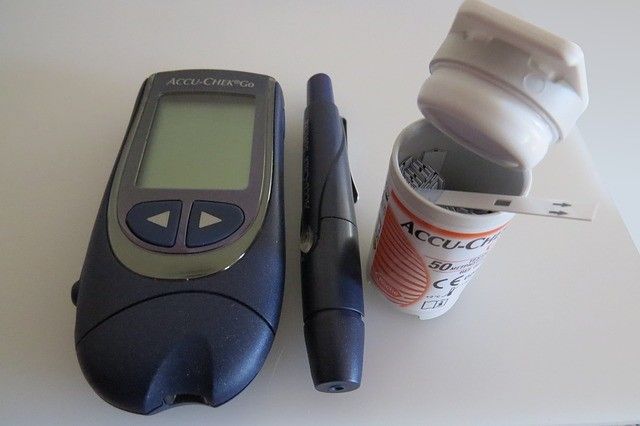
You can ask for their list of pre-approved meters and suppliers so that when you begin your search, you are already pre-armed with your potential purchase options.
Cost
Blood glucose meters come in a wide variety of models, some cheaper than others. However, before you choose, consider all the additional costs, such as the cost of test strips and any other bits and pieces you may need for that meter.
They’re often like buying a computer printer. They may appear cheap to buy the hardware, but the ink replacements turn out to be extremely expensive, making the initial purchase not a good one at all!
Ease of Use
Blood glucose meters should be user-friendly. You don’t want to raise your blood pressure through sheer aggravation due to the meter being too complicated to use! It should easy to hold and easy to carry so you can take it wherever you go.
The numbers on the screen must be clearly visible, especially if you are elderly or have vision problems. Make sure the results appear quickly on the screen and that it doesn’t take forever to display.
Make sure the strips are easy to use and that it isn’t difficult placing blood on them.
Special Features
There are meters that come with special features that make blood testing easier than others. Some of these features include backlit screens that allow readability at night, or where the environment has low-light visibility.
If you are vision-impaired choose a device that has audio capability so you can listen to the results during testing.
Storage Capability – Saving Your Results
It is worthwhile purchasing one that enables you to store or save previous readings for easy tracking of your blood glucose levels. This is a feature of most models available, so check that it available on your chosen model, especially if it is a cheaper one.
Due to our modern diet, tracking your blood glucose numbers has become a crucial part of health monitoring, especially if your doctor requires this information. A good meter allows you to save test results by creating logs which can be viewed or retrieved at any time.
Your doctor will be better assisted if you can show these readings at your next visit, or if you are more tech-savvy, you may prefer the type of meter that allows you to sync the recorded results into your computer or smartphone. This way, the next time your doctor asks for your blood glucose readings, you can simply email the results to them.
Support
Although most meters come with a manual on how to use them, it is helpful to be able to call the manufacturer’s toll-free number for support. If you are worried about having difficulties on learning how to use the device, this is one feature to take into consideration. Knowing the manufacturer’s support line is also handy if you have faults with your meter, test strips or lancing device.
Complications of Hyperglycemia
Hyperglycemia is a medical term meaning having very high levels of blood glucose. The World Health Organization defines hyperglycemia as fasting blood glucose levels that reach 7.0 mmol/L or higher, or a blood glucose reading of 11.0 mmol/L two hours after meals.
Blood glucose exists in a range, and when it goes above these levels it is defined as hyperglycemia. However, you don’t simply either have hyperglycemia or not. The difference between the effects of mild hyperglycemia and extreme hyperglycemia can be profound.
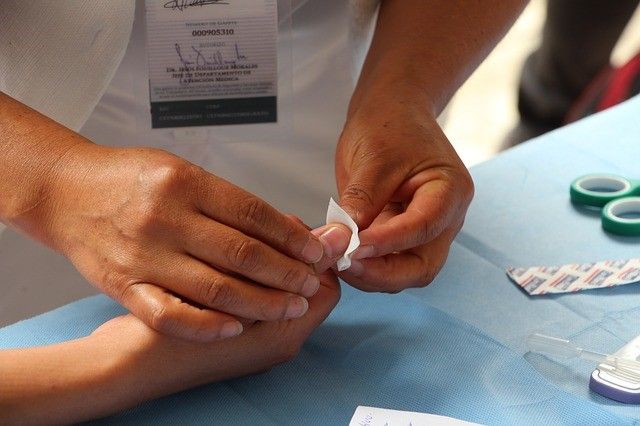
There are also huge differences in outcomes between an acute hyperglycemic episode and chronic hyperglycemia, which is the precursor to type 2 diabetes. Any hyperglycemia can be damaging, but when blood glucose levels are elevated constantly the body’s health is severely impacted, and some of the damage can be irreparable.
Hyperglycemia occurs because of not having enough insulin, no insulin at all or when the body is not responding to insulin efficiently. People who have this condition are at risk of suffering from major complications and should seek medical attention to determine the cause and best recovery options.
If hyperglycemia becomes chronic and left untreated the following complications may occur:
- Blindness, damage to the retina, cataracts.
- Damage to nerves that lead to serious infections in the feet.
- Kidney damage or failure.
- Osteoporosis and other bone and joint problems.
- Non-healing wounds.
- Oral infections.
- Cardiovascular disease.
Emergency Complications of Hyperglycemia
- Diabetic Hyperosmolar Syndrome
This condition mostly affects type 2 diabetics. In type 2 diabetes, insulin may be being produced, even in increased amounts, but the body has become insensitive to it due to its constant presence. This is due to excessive and repeated ingestion of simple carbohydrates, usually sugar-based foods and drinks.
In turn, the person’s blood glucose level stays high and is more than 600mg/dL. Since the hormone insulin is not working properly the body will not be able to use its free fatty acids and glucose for energy.
The elevated levels of blood glucose are dangerous and the body desperately seeks to lower the levels via the kidneys. The person will find they are urinating more often.
If nothing is done to remedy this situation an individual may suffer from extreme dehydration. When this state is reached patients are usually unable to rehydrate sufficiently orally, and an intravenous drip is necessary. Prompt medical attention should be given to people who have this condition as it can cause coma or even be fatal.
- Ketoacidosis
This condition usually occurs among people with type 1 diabetes but those who are diagnosed as type 2 diabetics may also suffer from this condition.
Diabetic ketoacidosis or DKA is a condition which occurs when a person has very high levels of blood glucose for an extended period along with the increased production of blood acids referred to as ketones.
This condition develops because of the body’s inability to produce insulin thus basic metabolic requirements can hardly be met. Regardless of food intake, the body is essentially starved of glucose, as there is no insulin to process it and make it available.
Our brain’s primary energy source is glucose and in its absence our systems fail. The symptoms of ketoacidosis are rapid deep breathing, drowsiness, blurred vision, frequent urination, loss of appetite, excessive thirst, stomach pain, vomiting and confusion.
Exercise for Lowering Blood Sugar
Exercise is recommended for lowering high blood sugar levels, yet many patients ignore the importance. Some patients have complained about exercise as being a nuisance or a boring chore.
If you are diagnosed with diabetes or any illness that leads you to having a difficulty in controlling your blood sugar levels, exercise will be prescribed as part of your treatment plan.

At this point, the patient needs to recognize that the exercise advised is not is not for the discretionary goal of “getting fit”, which they may see no need for. It is a very necessary process, combined with dietary improvements, that is essential for getting blood sugar down to non-dangerous levels, and keeping them there.
Exercise Works to Lower Blood Sugar Levels
Generally, an individual’s blood sugar level lowers right after any exercise or physical activity. This benefit may continue for the next 24 to 48 hours.
This post-exercise hypoglycemia is referred to as the “lag effect”.
During exercise, your muscles begin to have an increased sensitivity to insulin while making the body more capable of absorbing glucose, so there will be a lesser amount of sugar left to circulate in the bloodstream.
What Happens to Your Body During Exercise
During exercise, the body’s free fatty acids and sugar will be used as fuel for generating energy needed for the physical exertion.
The sugar being used as fuel comes from the liver, muscles and blood. Glycogen is the term used to define sugar that has been stored by the body in the liver and muscles.
The body uses glycogen during the first 15 minutes of exercise, but after 30 minutes the body will then start resourcing its fuel from the free fatty acids or “fats” for energy. This is how exercise depletes the body of its sugar and glycogen stores, and you will have lower blood glucose readings after exercise.
Knowing Your Body’s Reaction to Exercise
It is important to be aware of your body’s reaction to exercise as the response will vary from one person to another. Each different physical activity may have a different effect on your blood glucose level.
The duration or length of time you spend on a certain physical activity is also another key factor to take into consideration when measuring your blood glucose level.
Frequent testing of your blood glucose levels before, during and after exercise will help you see the pattern of your blood glucose fluctuations. You can then provide this information to your doctor so they can determine the best exercise treatment plan to help you better manage your blood glucose levels.
When Too Much Is Not a Good Thing
It is important to consult with your doctor before indulging in any physical activity if you have any medical condition, or taking any medications.
You may also ask for help from a fitness expert who can help you design a specific fitness program that will suit your individual needs.
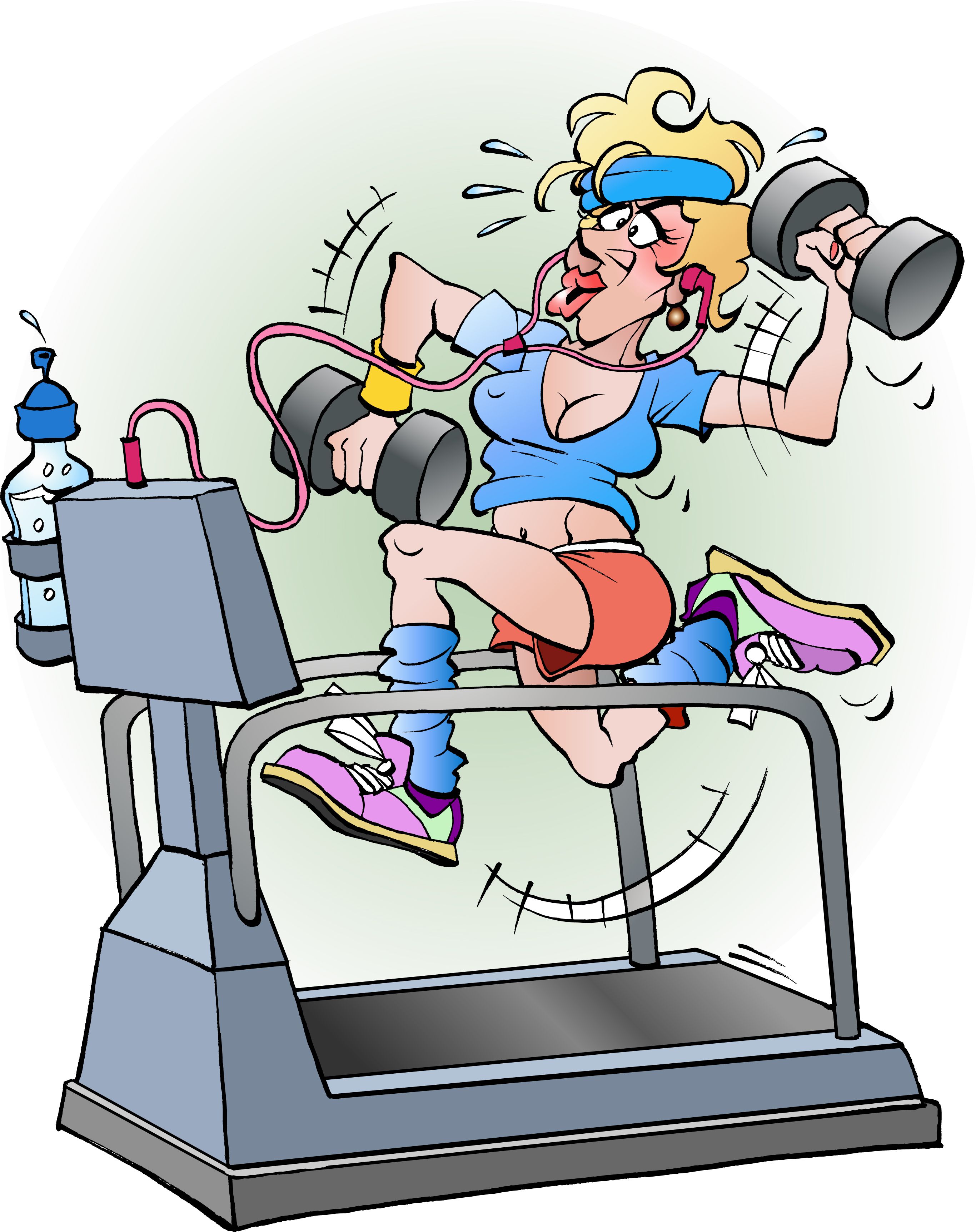
Always remember that whatever type of exercise you choose, you should not overdo it, especially at first. Exercising means doing more physical activity than you currently do.
If you have a sedentary lifestyle, start with simple short walks. If you are overweight you do not want to put sudden and extreme stress on your system. Aim to increase your heart rate but not to become breathless. In between these two indicators is a usually safe space. Start slowly and increase speed and distance as you are able.
Again, this is why it is important to consult with your doctor if you have any doubt as to how your body responds to any treatment, including exercise.
Factors Affecting Blood Glucose Test Results
Blood glucose meters are helpful for anyone, not just diabetics. There are many people who are non-diabetic, who experience fluctuations in their blood sugar levels and may be required to perform a blood glucose test on occasion.
It is only natural to want your blood glucose levels to be perfect every time you test. However, sometimes there are factors that can give you an incorrect reading. If you feel you are doing everything right in terms of diet, exercise, medicating etc., here are a few possible factors that may be affecting your blood glucose test results.
Hands – Are They Sparkling Clean and Dry

Before testing, make sure your hands are scrupulously clean. Any food and/or lotion residue left on your hands or fingers can certainly affect your blood glucose readings. If you use alcohol or a hand sanitizer, make sure your hands are perfectly dry before lancing.
There are chemicals and residues that cannot be seen by your naked eyes and these can impact your blood glucose readings. When fluid or any substance left on your fingers mixes with your blood you will most likely have an inaccurate reading.
It would be wise to wash your hands with warm water and dry them well before you start testing.
Environment – How’s the Temperature
It is important that glucose meters are stored correctly. By reading the user manual of your meter you will find the recommended temperature range in which your meter will give you the most accurate results.
Besides temperature, the altitude and humidity of the environment can also have an impact on your own body temperature, and also the testing strips you use.
Knowing your meter and your environment can certainly help you in achieving an accurate reading.
Timing
The first and most obvious variable is time – not so mush time of day but relative to food eaten, or time since food consumed. Make sure that you test yourself the same time after meals, or that fasting periods are the same each day before testing.
Test Strips – Are They Suitable for Your Meter
When buying more test strips, you may come across cheaper generic strips for your needs. Your own meter’s test strips may be pricey; therefore, you decide to opt for the cheaper brand instead.
These strips may be your problem.
Your meter may not be designed for generic strips; therefore, your readings may turn out to be erroneous. Check your meter’s user manual to see if testing strips made from other manufacturing companies are compatible.
Also check the strip manufacturer’s documentation to ensure they are compatible (or at least claimed to be) with your meter. If you have any suspicions regarding either the meter or the strips efficacy, do an online search.
If either are problematic, others will likely have had the same problem and have discussed it in forums etc.
It is also a good idea to take your meter with you to your next doctor’s appointment. While you are there you can have your blood glucose levels tested using their machine and then be tested using your own meter. You can compare results and determine whether or not your blood glucose meter is accurately calibrated.
Factors that May Lead to Blood Sugar Swings
When a person consumes foods high in simple carbohydrates, the body releases the hormone insulin. It doesn’t take long for the body to digest these simple carbs, and the sugar is rapidly released into the bloodstream.
The released insulin triggers multiple processes that make the blood glucose available for use for energy requirements, or to be converted to storage, as fat.
Whatever the end result, the insulin acts to remove sugar from the bloodstream and into the body’s cells.
This hormonal action is essential, as excess blood glucose is toxic.
When the diet consists of mostly protein, fats and complex carbs, insulin is released in minute amounts to deal with the steady predictable glucose release.

Conversely, when simple carbs or sugar-based foods and drinks are consumed, the glucose flood causes a corresponding insulin panic response.
This is when a person experiences a “sugar rush” and when the excessive insulin sweeps too much sugar from the blood, a “sugar crash” follows.
However, consuming simple carbs is not the only thing that leads to blood swings. It can also be caused by some other factors including the following:
Dehydration
Dehydration can cause your blood sugar levels to rise. This is because not having enough fluid can make your glucose in the bloodstream more concentrated.

On the other hand, if your blood sugar is high due to your diet, you may find yourself urinating more often as your body tries to expel the excess blood sugar via the kidneys, which can also lead to dehydration.
People who have trouble balancing their blood sugar levels must drink plenty of water throughout the day, every day.
The old rule of drinking at least 8 glasses of water every day, works well for most people, but individuals who are highly active and who have larger body builds may need more than eight glasses of water each day.
Caffeine
Caffeine can cause blood sugar levels to rise in those who have a degree of insulin resistance. Endocrinologist, Dr. Maria Collazo Clavell says that drinking more than two cups of coffee a day has been found to impair insulin action in people who have type 2 diabetes.

If you have issues with your blood sugar levels, you should pay close attention to the amount of coffee and other caffeinated beverages that you drink in a day. Of course, if you are adding milk and sugar to your coffee, you adding to your sugar loadings, irrespective of the caffeine effect.
However, for healthy people who do not have diabetes, caffeine does not affect their glucose levels.
Breads
If you are diagnosed with diabetes, counting carbs and keeping tabs on your blood sugar levels will certainly become an everyday part of your life.
If you love bread, you’ll have to start watching what you eat more closely.
Bagels are filled with carbohydrates and calories that will send your blood sugar levels up. Remember that not all bread is created equal. One English muffin contains 27 grams of carbohydrates and 140 calories while a bagel may contain approximately 58 grams of carbs and 294 calories.
There are low-carb type breads if you really can’t go without, but it should be realized that bread is not a requirement for human health, in fact it usually detracts from it.
Sleep
If you have trouble sleeping at night it can affect your blood sugar levels. The inability to achieve quality sleep every night may send your blood sugar and insulin levels higher compared to those people who sleep well every night.
Studies have shown that diabetics who were sleep deprived were found to be more insulin resistant than better sleepers.
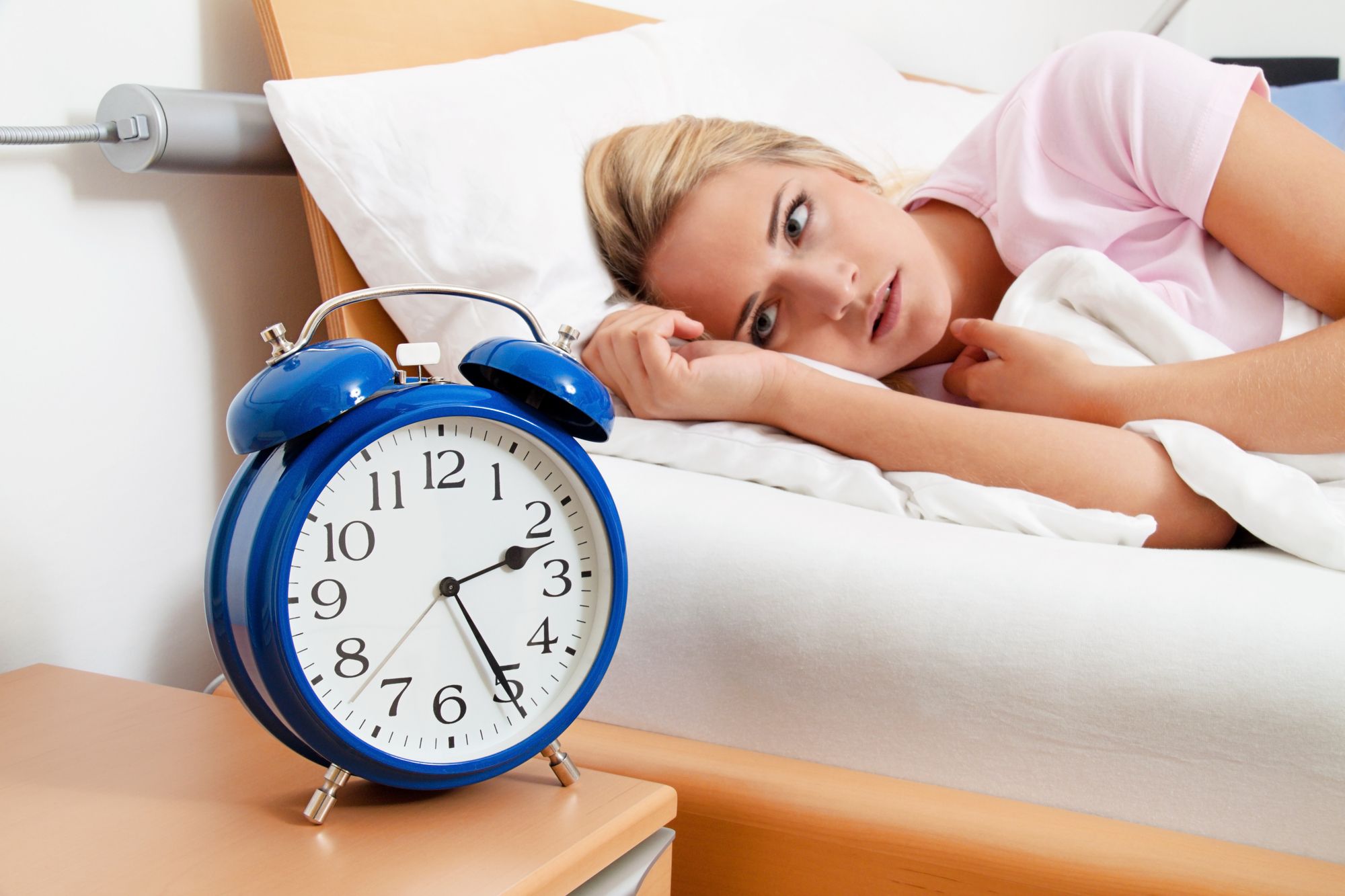
Herbal Remedies for Managing Blood Sugar
Maintaining healthy blood sugar levels is important for good health and many people use natural herbs as part of their program. These natural remedies can all be found in your kitchen or at the local store and easily added to your daily, healthy food diet.
Ginseng
Ginseng has long been touted as one of the best remedies for lowering blood glucose levels. Its active compounds have the ability to limit the tri-carboxylic acid cycle in order to increase insulin output, while also improving insulin response.

Studies have proven the potency of ginseng as a blood glucose modulator among diabetic and non-diabetic patients.
Ginseng has many other health benefits too, so don’t leave this ingredient off your shopping list.
Bitter Melon
This Asian vegetable, as its name suggests, has a bitter taste. It contains a plant-based, insulin-like substance called lectin. Lectin works effectively in keeping blood glucose low throughout the body.
Research shows that bitter melon is beneficial in assisting proper carbohydrate digestion which helps ensure a steady release of glucose into the bloodstream.
It helps reverse insulin resistance and to prevent the onset of complications that many diabetics are prone to suffer from.
Cinnamon

Cinnamon is another helpful kitchen companion that has been used medicinally for centuries. Cinnamon treats many conditions, one of which is lowering blood sugar levels in patients with type 2 diabetes.
A study which was published in the journal titled Diabetes Care revealed that people who were given cinnamon experienced an 18 to 29% drop in their blood glucose levels.
Other studies conducted regarding cinnamon for diabetics has shown that it works by slowing down the rate in which the stomach is emptied, helping stabilize glucose release into the bloodstream.
The only trap here is to assume those cakes and donuts will be alright to eat if they are sprinkled with cinnamon. Wrong. You can use cinnamon in other ways, it doesn’t have to be a dessert additive.
Although cinnamon is known to be relatively safe, some people can be allergic to it. Excessive use of cinnamon may also cause mouth sores or may even cause skin burns in some people.
Garlic
Garlic improves glucose tolerance while increasing the amount of insulin being released into the body.

Researchers have found this is made possible by several compounds in each clove of garlic, such as allyl propyl disulfide, S-allyl cysteine sulfoxide and allicin. These compounds work together to improve a person’s insulin levels by blocking the onset of insulin inactivation in the liver.
In turn, more insulin will be made available for the body to use. This has been proven in a study that was published in the Journal of Medicinal Food. In addition, findings from a separate study published in the Journal of Agriculture and Food Chemistry also showed that garlic can be helpful for lowering the risk of suffering from diabetes-induced cardiomyopathy.
Oregano
Oregano contains blood sugar regulating compounds known as glucosides. This herb is also known in some countries as marjoram.
The regular consumption of foods that contain oregano helps people lower blood sugar levels, much like many medications for diabetes do.
Experts emphasize that even though these herbs are effective in managing blood sugar levels, they still cannot serve as a substitute for what a healthy lifestyle, diet and regular exercise can do in preventing the onset of diabetes and in regulating blood sugar levels.
There is no one silver bullet for overcoming high blood sugar levels, but these herbs can be an effective and natural part of the solution.
Lifestyle Tips for Maintaining Healthy Blood Sugar Levels
Many people experience energy ups and downs as their blood sugar dips and surges. When blood sugar levels become too low, you can expect your energy to start to go down too.
A healthy human functions best when their blood sugar levels stay within a narrow range, enough to supply current energy requirements, but not too much to be toxic to nerves and organs. Our body releases specific hormones in attempt to keep blood glucose at these optimum levels.

The body detests having low levels of blood sugar. It needs energy to survive and perform all its functions.
If the level of blood sugar dips, the person will experience several symptoms such as a rapid heartbeat, fatigue, sudden mood shifts, difficulty focusing and headaches. They will also experience hunger, usually a craving for sweet, quickly-digested simple carbs.
What’s unfortunate is many people experience these symptoms on a daily basis, simply because they don’t know they have a problem. It is simply accepted as their normal.
If you think this sounds like you, then there are plenty of things you can do to stop your blood sugar levels from fluctuating.
Eat a Good Breakfast
Most people are busy and need a quick go-fast hit in the morning. Unfortunately, white bread and other fast-burning carbs, such as cereals, won’t provide wither the nutrient value or the sustained energy you need. You are probably better off having no breakfast at all!
What you need to start you day is a hit of protein. Instead of jam and honey on that bread, cook up a piece of bacon and egg or look at the keto or the Paleo diet
If you can do without the toast, even better.

Eating breads and cereals for breakfast causes you to experience the mid-morning slump, and it’s probably at this time that you then feel like morning tea, which might consist of a biscuit or two or a cake. These are more bad ‘slump’ foods, which maintains the bad cycle.
Other people find they wake up feeling grumpy and irritable and don’t even know why. It’s just in their nature, isn’t it?
Or is it?
What they don’t realize is that it’s very possibly a drop in their blood sugar levels. If they ate a good breakfast they soon wouldn’t feel this way.
Their body would be getting what it needs, a steady supply of energy.
Whatever it is that you eat for breakfast always have your blood sugar health in mind. This will help you make better food choices, every meal, that will keep your insulin and blood sugar levels on an even keel throughout the day, starting at breakfast time.
Avoid Getting Too Hungry – Don’t Wait to Eat
It’s ok to feel hungry if you have the mindfulness to wait until the next scheduled meal. If you refuse to have snacks in between meals because you can wait until your next healthy meal, that’s fine.
However, if feeling hungry means you will indulge in a “health-food bar” (really, it’s a sugar stick) to get you through to the next meal, don’t let yourself get that hungry. If you must snack, an orange, or an apple, a handful of nuts or a few slices of cheese can be good choices for a quick ‘get out of hunger zone’ fix.
Also, if feeling hungry means you will have a sugar-loaded eating binge at your next meal time, don’t let yourself get that hungry.
The Bottom Line
The biggest single factor that will affect blood glucose levels, that you have the most control over, is the food choices you make. If you eat sugary, sweet, simple carbs, you will have sugar rushes and crashes.
If you eat mostly protein, fats and complex carbs your blood sugar will be balanced and in the range it should be. Your moods, energy levels and long-term health will all improve.
Understanding a Sugar Crash
The amount of energy we have largely depends on our blood sugar levels. Having steady blood sugar levels means being able to maintain a steady mood, steady energy and a steady focus throughout the day.
The problem begins when a person’s blood sugar levels crash making them feel lethargic, forgetful and irritable. To avoid this, it is important to only eat a healthy diet, providing the body with fiber, protein, healthy fats and most of all slow-burning, complex carbohydrates instead of simple carbs.
With these types of foods fueling the body, a person can expect a steady and regular rate of digestion as well as a steady supply of nutrients into the bloodstream for sustained energy for at least the next two or three hours.
Sugar Consumption Leads to a Sugar Crash

It is simplistic to assume that eating sugary foods will stop a sugar crash, however, they are the type of foods that set up the cycle that will cause a “sugar crash”, after the initial “sugar rush”.
A steady supply of energy cannot be achieved if a person is of the habit of eating fast-burning carbohydrates. High-GI, fast carbs are in found in foods such as candies, soft drinks, muffins, pancakes, bagels, cakes, crackers and cookies. These foods are called fast carbs because they are deficient in fiber, fat or protein that will help slow down the process of digestion.
Once ingested, these foods are quickly converted into sugar resulting in a spike of blood sugar levels. This spike in blood sugar levels is perceived by the body’s autonomous systems to be a metabolic emergency. Insulin is released to reduce the excess amount of sugar in the bloodstream as fast as possible.
This immediate reaction of the body causes blood sugar levels to drop to very low levels. This drop in blood sugar levels is what is referred to as the “sugar crash”.
This sugar crash leads to more cravings for simple carbohydrates and other sugary foods. If an individual keeps on yielding to their sugar cravings the vicious cycle of the sugar rush and then the sugar crash continues over and over again.
The person begins to suffer from a roller coaster ride of high energy and then none. This constant “spike and crash” routine of blood sugar levels also causes fatigue, weight gain and mood swings.
Long-term, it is also a precursor for prediabetes, and ultimately type 2 diabetes.
How to Stop Blood Sugar Spikes
Putting an end to sugar cravings and sugar spikes not means firstly eliminating fast carbs. It also means shifting to eating the right foods at the right time.
Your body needs a steady supply of nutrients for sustained production of energy.
Eating foods high in fiber, protein, healthy fats and complex carbs, provides your body with the energy it needs. Instead of sugar snacking throughout the day, eat healthier meals that take longer to digest.
If you still need to snack, eat five smaller meals a day, rather than the regular three a day. Removing fast carbs and other sugary foods from your diet doesn’t mean you won’t have energy. By eating healthy, you will actually have more energy than ever before! Energy, moods and all-over health will improve.
Low Blood Sugar and Breathing Problems
There is nothing so precious as our next breath of air. It is said we can go three weeks without food and three days without water, but three minutes without air is deadly for most people.

A great many people struggle with their breathing, either continually or periodically. Many of these people have been given reasons and diagnoses that make sense, such as asthma, allergy or emphysema.
There are many people who have unexplained, intermittent episodes where they struggle for breath, or feel as though they do. It may have been explained away by their doctor as panic attack, anxiety symptoms or simply put under the allergy umbrella.
In most cases these diagnoses may be correct, however some are left doubting as they cannot see a common cause or trigger when they have the problem.
Some sufferers have found relief by increasing their magnesium intake, others have found that variables such as air pressure and dew point have an effect on their ability to take a satisfying breath.
Could it be Low Blood Sugar
One possible cause that is gaining some recognition is low blood sugar. A number of people who have either been diagnosed as suffering from hypoglycemia, or who have tested themselves and know it to be so, claim there is a correlation between their breathing problems and low blood glucose levels. Hypoglycemia is often related to the treatment of diabetes. However, a variety of conditions — many rare — can cause low blood sugar in people without diabetes. Like fever, hypoglycemia isn't a disease itself — it's an indicator of a health problem.
At the same times they have been experiencing symptoms of hypoglycemia, such as feeling tired, disorientated, lethargic, anxious, shaky and hungry (especially for sugary snacks), they have had problems with their breathing.
The feelings described by sufferers is that of not being able to take a full satisfying breath, or of having an elephant sitting on their chest as they tried to breathe.
When the hypoglycemic condition has been overcome, the ability to take full, satisfying breaths returns.
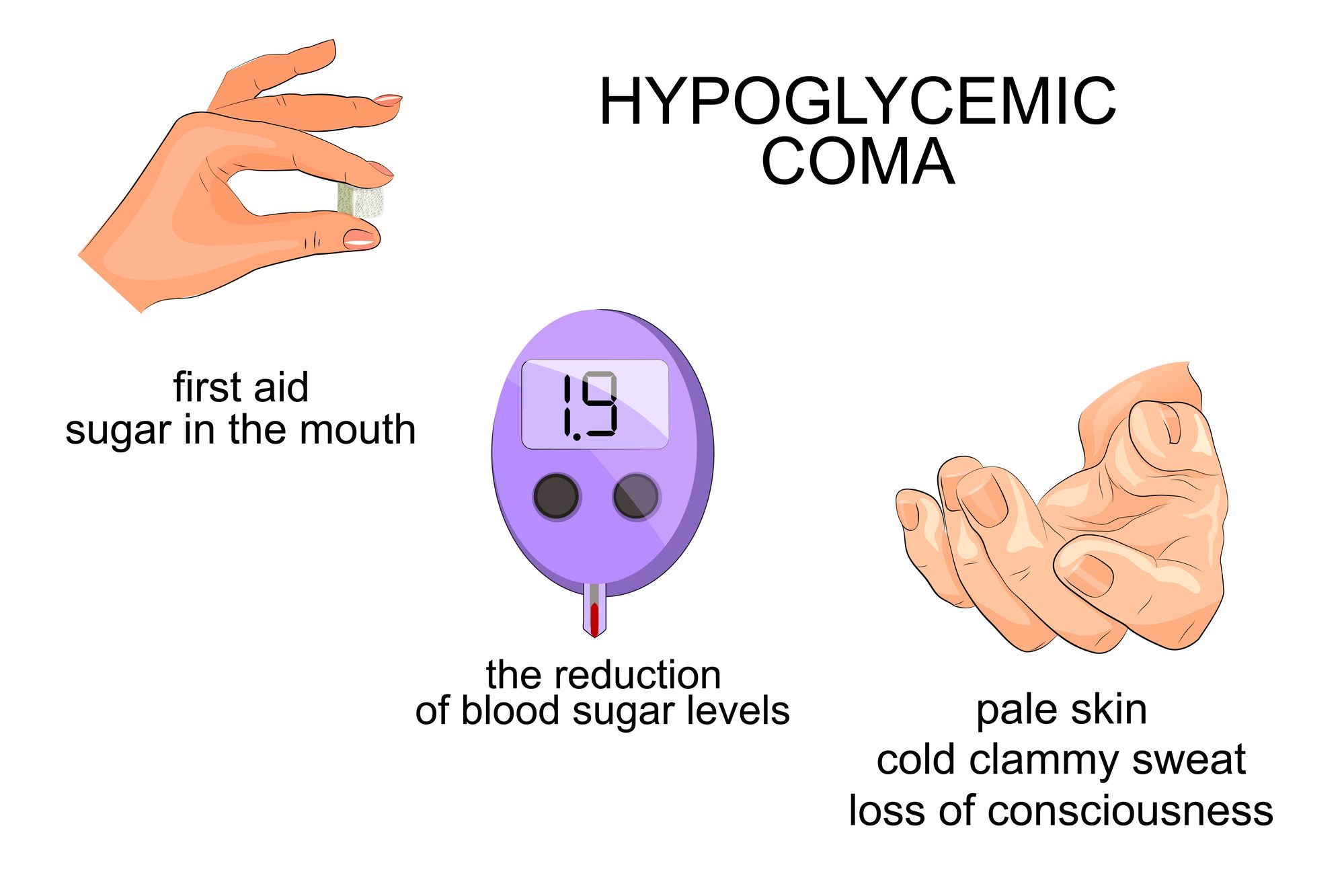
There appears to be little or no medical proof at this stage, and the evidence is anecdotal, but certainly compelling.
Some have been examined by their doctor during this time and been told that they are in fact taking full breaths, so they are told the problem must by psychological, due to anxiety or stress etc.
So, it may be possible that the body is taking full breaths but there is a signaling problem at the time.
Whether full breaths are being taken or not, it has been theorized that the reason why low blood glucose may be the culprit is because the brain is so dependent on our blood glucose. The brain has first call on blood glucose, and when supplies are low, other systems will be slowed or shut down to protect brain function as long as possible.
Whether this affects actual lung function or signaling is conjecture, what matters is that if low blood sugar is causing it, it can be prevented by maintaining correct levels.
For anyone who has not been given a satisfying diagnosis or explanation of their breathing problem, if you suspect that you have bouts of hypoglycemia, or low blood sugar, it might be well worth your while to invest in a testing kit, to monitor your levels.
If you do test positively for hypoglycemia, and it corresponds to your breathing difficulty, you will at last have an explanation.
You will also have one more big reason to address your hypoglycemia problem. Recognizing that your breathing problem is a symptom of your low blood sugar lets you focus on fixing the cause.
How reassuring to know you can reduce or eliminate the scary feeling of not being able to take a fully satisfying breath?
When to see a doctor
Seek a doctor's help immediately if:
- You have what may be symptoms of hypoglycemia and you don't have diabetes.
- You have diabetes and hypoglycemia isn't responding to treatment. Initial treatment of hypoglycemia is drinking juice or regular soft drinks, eating candy or taking glucose tablets. If this treatment doesn't raise your blood sugar and improve your symptoms, contact your doctor right away.
Seek emergency help if:
- Someone with diabetes or a history of recurring hypoglycemia has symptoms of severe hypoglycemia or loses consciousness
Conclusion
It is possible to take control over managing you blood sugar levels. Where possible the focus should be on diet and exercise, with medication a last resort (except for insulin-dependent diabetics, for whom medication is essential).
The solution is simple, but not necessarily easy. A lifetime of dietary habits that in some people constitute an addiction can take real effort and mindfulness to turn around.
However, if you are diabetic or pre-diabetic, or headed that way, your life and your quality of life, depends on it.


